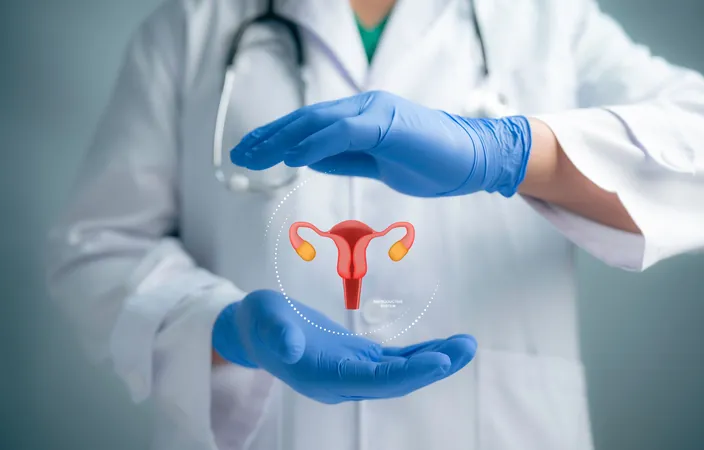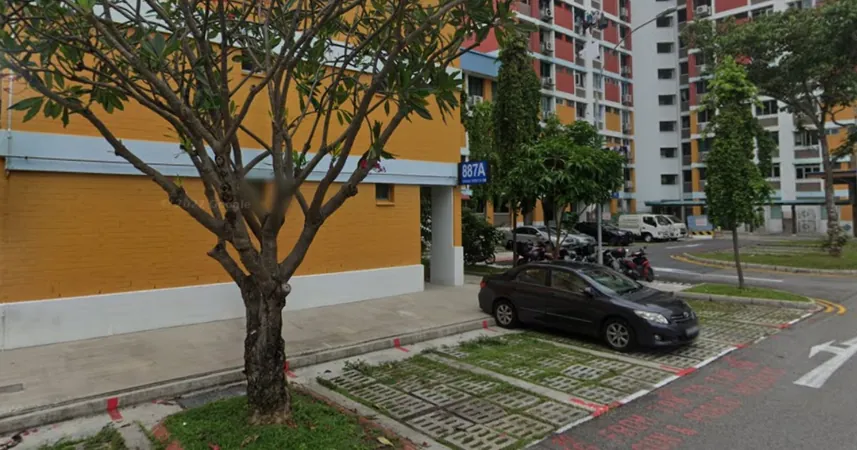
Unlocking Relief: Non-Invasive Brain Stimulation Defeats Urgency Urinary Incontinence
2025-06-02
Author: Daniel
A Hidden Dilemma: The Struggles of Latchkey Incontinence
Imagine coming home after a long day, but instead of relief, you’re hit with an overwhelming urge to rush to the bathroom. This unsettling scenario is known as "latchkey incontinence"—a condition that can starkly disrupt daily life. Recent research from the University of Pittsburgh reveals promising strategies to combat this issue, suggesting that mindfulness training and non-invasive brain stimulation can reduce urinary leaks triggered by familiar cues.
Groundbreaking Research in Bladder Control
Published in the journal *Continence*, this pilot study is the first of its kind to investigate brain-centered therapies for urinary incontinence. The lead researcher, Dr. Becky Clarkson, emphasizes the gravity of incontinence, particularly among older adults who often face social isolation and mental health challenges due to the fear of leakage. "Our goal is to provide effective tools to restore quality of life," she states.
Understanding Latchkey Incontinence: The Pavlovian Connection
Latchkey incontinence is often rooted in conditioning, likened to Pavlov’s experiment with dogs. Just as they learned to associate the sound of a bell with food, individuals can come to feel an urgent need to urinate in response to familiar scenarios, like seeing their front door. Dr. Cynthia Conklin, the study's lead author, explains that viewing such triggers can overly activate the brain's prefrontal cortex, the area responsible for bladder control.
Innovative Approaches: Mindfulness and Brain Stimulation
To address this issue, researchers conducted an experiment with 61 women over 40 who experienced this situational urgency. Participants were divided into three groups: one engaged in a mindfulness exercise, another experienced non-invasive brain stimulation known as transcranial direct current stimulation (tDCS), while the third group did both—simultaneously viewing their personal trigger images.
Encouraging Results: A Path to Empowerment
After just four sessions, remarkable improvements emerged. All participants reported a decrease in urgency when confronted with their triggers. Although the pilot study lacked a control group, the results mirrored outcomes achieved with more traditional interventions like medication and pelvic floor therapy.
Breaking the Taboo: A Supportive Environment
More than 90% of participants completed the study and many expressed deep satisfaction, continuing to use mindfulness techniques in their daily routines. Dr. Clarkson noted that the positive feedback was so overwhelming students sent thank-you cards, signifying a breakthrough in a topic often shrouded in stigma.
Future Directions: Expanding Access to Relief
The research team aims to further explore how these techniques could be incorporated into independent living facilities, making it easier for older adults to regain control. An app-based tool for accessible mindfulness techniques at home is also in the works—an exciting development in treating a condition that affects countless individuals.
Incontinence doesn’t have to be a silent struggle. This innovative research opens doors to a future where individuals can tackle their challenges with confidence and ease.



 Brasil (PT)
Brasil (PT)
 Canada (EN)
Canada (EN)
 Chile (ES)
Chile (ES)
 Česko (CS)
Česko (CS)
 대한민국 (KO)
대한민국 (KO)
 España (ES)
España (ES)
 France (FR)
France (FR)
 Hong Kong (EN)
Hong Kong (EN)
 Italia (IT)
Italia (IT)
 日本 (JA)
日本 (JA)
 Magyarország (HU)
Magyarország (HU)
 Norge (NO)
Norge (NO)
 Polska (PL)
Polska (PL)
 Schweiz (DE)
Schweiz (DE)
 Singapore (EN)
Singapore (EN)
 Sverige (SV)
Sverige (SV)
 Suomi (FI)
Suomi (FI)
 Türkiye (TR)
Türkiye (TR)
 الإمارات العربية المتحدة (AR)
الإمارات العربية المتحدة (AR)